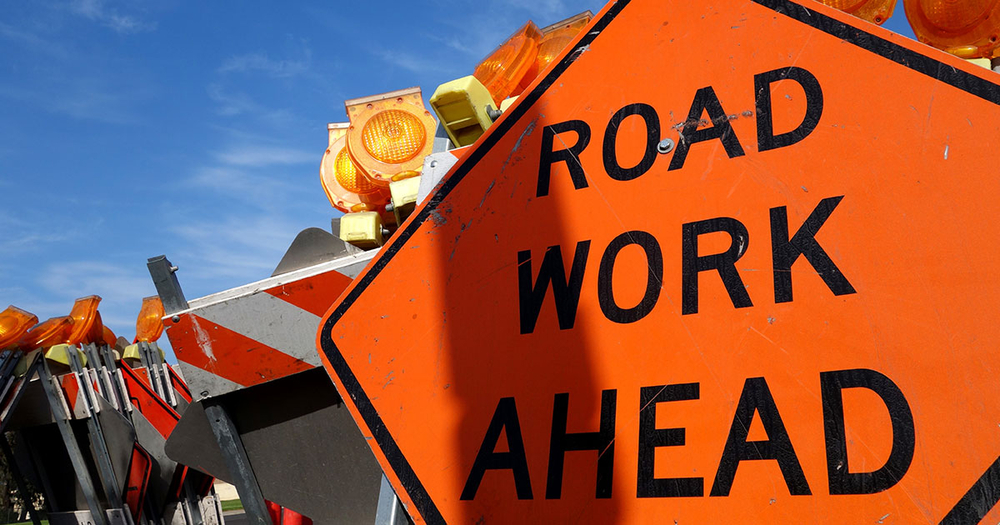
According to the National Institute for Occupational Safety and Health (NIOSH),
roughly 20,000 construction workers are injured each year in highway and road construction accidents. In fact, transportation incidents account for over 65% roadway worksite fatalities. As many as 100 construction workers are killed every year.
Organizations like the Occupational Safety & Health Administration (OSHA) develop standards to improve workplace safety, but accidents still happen.
Below, we cover the most common causes of road construction injuries and how to stay safe on the job.
The Most Common Causes of Road Construction Injuries
Road construction comes with many risks; it is not limited to dangerous equipment and risk of collision. In fact, only
35% of highway construction injuries that occurred between 2003 and 2008 were caused by contact with equipment or falling objects. Other common causes for injury included slips and falls, overexertion, and exposure to harmful substances.
Though many workplace injuries affecting road construction workers are minor, fatalities do happen.
Nearly 50% of these fatalities that occurred between 2005 and 2010 were caused by run-overs or back-overs involving construction vehicles. Another 14% were caused by collisions between vehicles and mobile equipment, and 14% by getting struck or caught by construction equipment.
Accidents are bound to happen when heavy machinery is involved, but the Associated General Contractors of America Highway Worker Safety Program identifies four major hazards:
- Falls caused by improperly constructed surfaces or unprotected edges
- Struck-bys caused by vehicle strikes or falling/flying objects
- Caught-in-betweens caused by rotating equipment or unguarded parts
- Electrocutions caused by contact with utility lines or live circuits
Being aware of the risks is the first step in protecting yourself on the job.
Tips to Stay Safe When Working Road Construction
The National Highway Work Zone Safety Program works to enhance the safety of highway work zones both for motorists and construction workers. This program involves elements such as standardizing traffic control plans and improving worksite evaluations. The program also develops and introduces innovative technology to improve worksite safety.
In addition to following work zone regulations, road construction workers can protect their safety by following these 10 tips:
- Wear high-visibility clothing. Always wear high-visibility clothing that adheres to the American National Standard for High-Visibility Safety Apparel and Accessories (ANSI). This includes armbands, hats, and vests made with fluorescent or reflective materials.
- Identify potential hazards. Be observant on the site, making note of potential hazards around you and approaching them with caution. Always check your blind spots when operating machinery and follow safety precautions for moving construction equipment.
- Be aware of worksite equipment. Be aware of worksite equipment as well as vehicles entering and exiting the work site. Understand the channel lanes to know where walking is prohibited.
- Use spotters. When loading and unloading equipment from vehicles, always use spotters. As a spotter, you should know where it is safe to stand and which gestures to use to communicate with vehicle operators.
- Understand and use communication signals. Every member of the team should understand and use the same communication signals. Whether you are loading and unloading equipment or entering or exiting the worksite, always communicate with the workers around you to ensure everyone’s mutual safety.
- Apply parking brakes to equipment. Always apply the parking brake after stopping construction vehicles or equipment. When parking on an incline, use the appropriate block behind or in front of the tires as an extra layer of precaution.
- Wear a seatbelt. Never operate construction machinery or a work vehicle without wearing a seatbelt. It doesn’t matter how short the ride, always buckle up.
- Exercise caution around worksite vehicles. Whether you are driving a vehicle, or approaching a piece of machinery, exercise the highest degree of caution. Never assume that the operator of a vehicle sees you – always signal the vehicle operator to shut down the equipment and get acknowledgment from the driver before approaching or crossing the path.
- Stay hydrated on the job. Construction work is exhausting, especially in the heat of summer, and over-exertion is a common cause of injury. Stay hydrated on the job and take precautions such as regular water breaks.
- Make eye contact before approaching. Always make sure the operator of a vehicle or piece of machinery sees you before you approach. As a vehicle operator, make eye contact with all workers in the vicinity before moving the equipment.
Workplace safety is something all workers need to approach proactively. Accidents are most likely to occur when safety standards are not enforced, and when workers fail to take basic precautions. Following the 10 tips above will help you and your team stay safe.
For equipment, see our
traffic control supplies and road safety equipment.
Road construction accidents occur when safety standards are not enforced & when workers fail to take basic precautions. Follow these 10 tips to promote safety.
